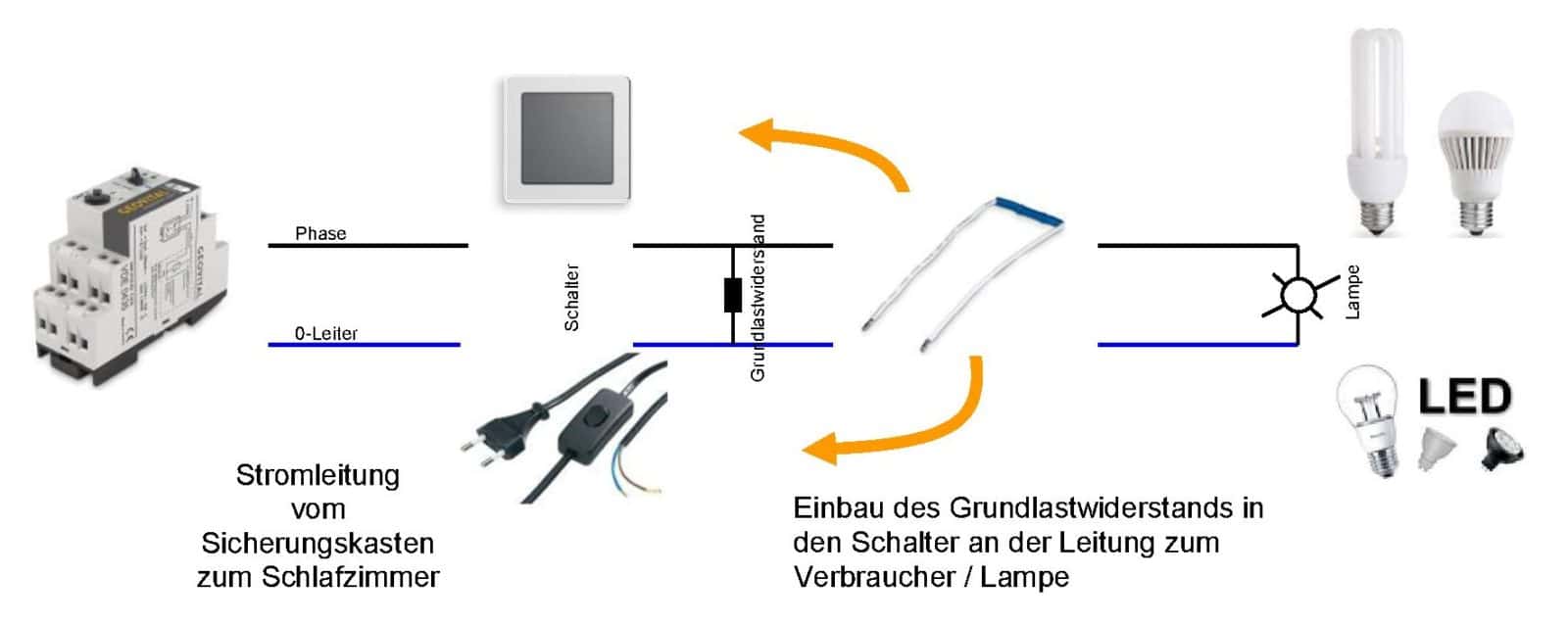Geovital base load resistor
With the base load resistor energy-saving lamps and LEDs can also be operated with a Circuit Cut-Off Switch!
Energy-saving bulbs and LEDs can also be operated with a circuit cut-off switch!
New technology meets old technology
Circuit cut-off switches operate according to proven old technology and may have problems with the control electronics of some LEDs and energy-saving bulbs.
This becomes apparent when the circuit cut-off switch does not recognize these light sources and the light accordingly does not turn on. This problem is not caused by the circuit cut-off switch, but by the capacitor of the control electronics used by these light sources.
Affected are high-voltage LEDs (e.g. GU 10 socket) and energy-saving bulbs that are operated with 230 volts.
Since circuit cut-off switches usually switch on at a consumption/load of around 1.5 watts, in this case the "initial current" requested by the light source is below 1.5 watts. The circuit cut-off switch would not switch on - the light cannot be switched on.
Basic load resistor solves the problem
To avoid this, a basic load resistor can be inserted into the circuit. It is important to note that the basic load resistor is installed after the switch and is only activated when the lamp switch is turned on.

This problem occurs less frequently with low-voltage LEDs (e.g. MR 16 socket) that operate at 12 volts, because the external transformer used usually draws enough load to make the circuit cut-off switch work.
Login



